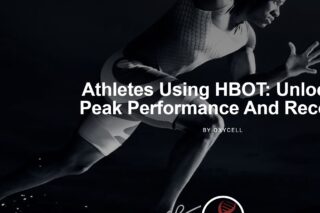This summer, MedicalExpo e-magazine is highlighting ten of its most popular articles published in 2023—an opportunity to review the cutting-edge innovations and digital technology that have made an impact in several healthcare sectors this year. Here is article #5. It was first published on January 26, 2023.
Are your arteries the same age as you are? Or a few years, or even decades, older? While this question may be disturbing, it is French company Axelife’s goal to answer it with its pOpmetre. This medical device uses algorithms coupled with a layer of artificial intelligence in order to calculate, non-invasively and in just 14 seconds, the arterial stiffness of a patient and deduce an “arterial age.” The good news is that people can act on these results and possibly return to a “normal” age by taking hygienic and dietary measures.
One of the first things a general practitioner will measure on a patient is the classic peripheral blood pressure. But this parameter has its limits, according to Alexandre Plé, CEO of Axelife:
“At ten minute intervals, depending on what will happen to the patient or even the stress that he or she will feel being in a medical office, we can have totally different results. This is not the case with arterial stiffness.”
Clinical studies have also shown that when patients are told about their arterial age, the impact on them is 4 times greater than with any other indicator.
“If the physician tells the patient that their blood pressure is 15.7 instead of the ideal 12.8, the patient may not understand what it really means and may not necessarily initiate a change when they go home.
On the other hand, if the doctor tells them that instead of being 45 years old, their arteries are 60, the impact will not be the same… The knowledge of their arterial age increases the patient’s willingness to take control of their life by tenfold. And the key to what we propose with our pOpmetre is to initiate behavioral change.”
Cardiovascular risks are the leading cause of death in the world. In France, among women, cardiovascular diseases kill more than cancer. The human body is made up of 100,000 kilometers of arteries and the pressure that passes through these pipes—the one that is measured via traditional blood pressure—does not necessarily take the pipes into account.

The more rigid arteries are, the faster the blood will flow through them. And the faster the blood flows, the more it will clean everything inside. But there is a risk with this cleaning which is linked to atheromatous plaques.
Atherosclerotic plaques are fed by the fats circulating in the blood, and they progressively develop on the wall of the artery until they cause a narrowing over time that hinders the proper circulation of blood. Therefore, the faster the blood circulates in the artery, the more it cleans everything in its path and the greater the risk of detaching the atheromatous plaques that have formed. A heart attack or a stroke is an atherosclerotic plaque that has been detached and blocked an artery.
Today, arterial stiffness is little known and Axelife’s goal is to interest as many people as possible in the subject in order to become a real actor of prevention. Alexandre Plé explained:
“The pOpmetre is a triage tool, its objective is to allow everyone—especially people who are unaware of their cardiovascular risk potential—to be identified as early as possible.”
The pOpmetre’s Algorithms
How does the system work? The pOpmetre is a class IIa medical device that is approved for measuring pulse wave velocity (PWV). This speed is measured non-invasively using two PPG sensors—basic sensors for photoplethysmography (the same technology found on connected watches for example)—one placed on the index finger and the other on the second toe.
The device is ultra fast and measures the transit time of this pulse wave in 14 seconds. Alexandre Plé said:
“The pulse wave is generated by the left ventricle of the heart, it taps on the arteries and the pOpmetre measures this vibration. In other words, it is like throwing a stone in the water and measuring the ripples caused by the stone’s throw.”

From this PWV measurement, the pOpmetre’s algorithms will output indicators of the patient’s health status. First, they will identify a score that corresponds with an arterial age. They will also measure the risk of PAD (peripheral arterial disease of the lower limbs) by determining the SPI (systolic pressure index). Finally, they will determine the aortic central pressure, which is a better reflection of cardiac work than peripheral blood pressure.
Alexandre Plé continued:
“If elevated arterial stiffness is detected, we always refer to the primary care physician or the cardiologist. What’s important to know is that arterial age is the only age that can be reduced. So it is very important to be able to determine your arterial age because you can then act on it.
The English physician Thomas Sydenham said in the 17th century: ‘A man is as old as his arteries’.”
Implementing a healthier lifestyle can impact arterial stiffness: eating healthier, sleeping better, exercising, etc. A poor lifestyle accounts for 95% of the causes of high arterial stiffness—the other 5% may be due to genetic factors.

“Physical activity, moving around, this is fundamental—we forget it far too often. Sleep is also essential because we spend half of our lives asleep. Then comes food (not too fatty, not too salty, not too high in protein), etc.”
The second way to impact arterial stiffness is through medicinal treatments from the patient’s general practitioner in order to bring more flexibility to the arteries. However, these are necessarily long-term treatments and are no longer part of a preventive approach.
A pOpmetre in Every GP’s Office
The pOpmetre costs 6,500 euros (excluding taxes) and is currently mainly intended for healthcare professionals, i.e. healthcare institutions and general practitioners’ or specialists’ medical offices.
“Our ambition is to eventually have a pOpmetre in every GP’s office because the GP is the one who naturally does the initial triage. If no risk is detected, the examination can be repeated every year. If there is a risk, the examination should be repeated at least every three months.”
Axelife was created 10 years ago, and they have eight years of research and development behind them with scientific validation through more than 34 publications. The company is ISO 1385 certified and the first in France to offer such a device. On an international scale, their main competitor is the SphygmoCor® device from the Australian company Atcor.











